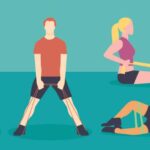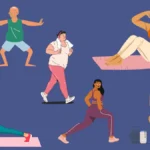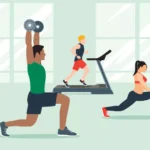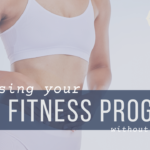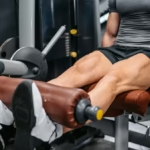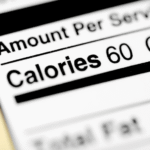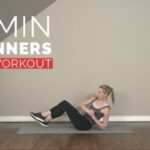Get fit without a gym. Bodyweight exercises use your own body for resistance. You don’t need equipment. You can exercise anywhere—even a small space at home or your hotel room. This guide explores the benefits and shows you many beginner-friendly moves. It provides detailed instructions and expert-backed advice for U.S. readers. You’ll learn how to build strength, burn calories, and stay motivated. Each section (H2) includes two subpoints (H3) explaining how it works. A FAQ section answers common questions.
What Are Bodyweight Exercises?
Bodyweight Means No Equipment
Bodyweight exercises use only your body for resistance. You don’t need weights, machines, or gym membership. You can do them anywhere—home, park, hotel room, or office hallway.
They Mimic Real-Life Movements
These exercises are functional. They mimic movements you use every day. For instance: squatting to sit, pushing to open a door, lunging when walking, or balancing when twisting. They improve coordination, balance, stability, and mobility.
Why Bodyweight Workouts Are Effective
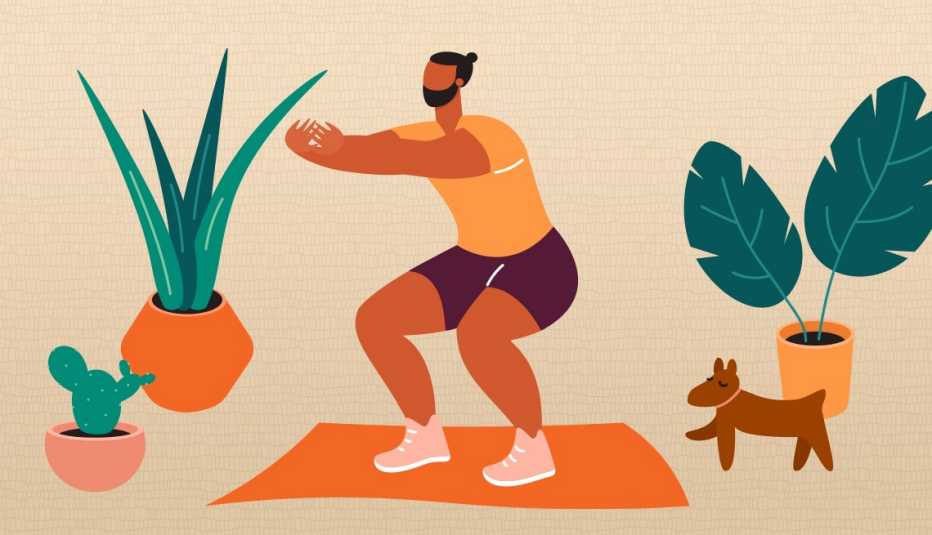
They Strengthen All Major Muscle Groups
Moves like squats, push-ups, planks, lunges, and glute bridges engage multiple muscles in one exercise. This builds full-body strength, endurance, and flexibility.
Accessible and Beginner Friendly
Because they don’t require equipment or prior skill, bodyweight workouts are ideal for beginners. You can modify exercises and progress at your own pace.
Low Risk of Injury and Highly Adaptable
Without heavy weights, bodyweight workouts reduce the chance of injury. You can adjust intensity by changing reps, tempo, rest, or using easier/harder variations.
Main Benefits of Bodyweight Training
Build Strength and Improve Endurance
You can build muscle and stamina using only your bodyweight. Research shows untrained adults can gain strength, endurance, and mobility within weeks. Progressing reps or intensity builds results over time.
Helps Bone Health and Joint Stability
Weight-bearing exercises strengthen bone density. They also improve joint mobility and balance—key for aging well and avoiding falls.
Saves Time and Keeps You Consistent
Even brief workouts are effective. A recent study confirmed that just five minutes of bodyweight exercise each day improved strength, flexibility, cardiovascular fitness, and mental well-being.
Mental Health and Motivation
Focused bodyweight routines boost mood, reduce stress, and enhance mental clarity. They also strengthen mind-body connection, helping you stay engaged and motivated.
Also Read Walking vs. Running: Which Is Better for Beginners?
Beginner Bodyweight Exercises You Can Do Anywhere
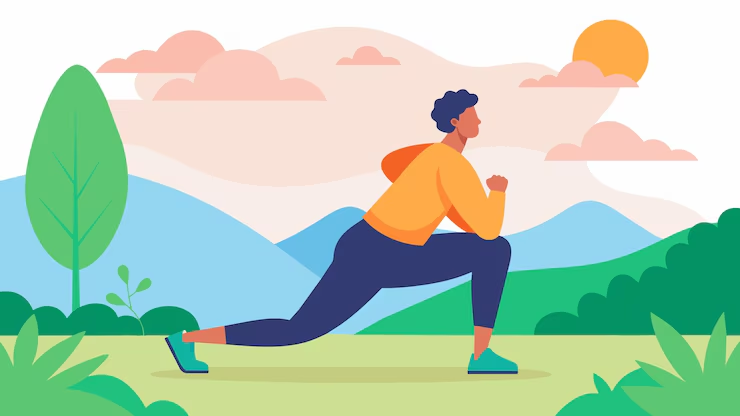
Squats
- How to perform them: Stand feet hip-width apart. Lower hips back and down as if sitting. Keep knees over toes. Rise through your heels.
- Beginner tips and variations: Try half squats or hold onto a chair for support. To advance, lower deeper or do jump squats.
Push-ups
- How to perform them: Place hands under shoulders in plank position. Lower chest to floor. Push to straight arms. Keep body straight.
- Beginner variations: Do push-ups on knees or against a wall. Progress to full plank push-ups or incline push-ups.
Lunges
- How to perform: Step forward with one leg, bend knees to 90°, lower back knee close to floor, then rise back up and switch legs.
- Beginner tips: Use a wall or chair for balance. Start with half lunges or walking lunges. Challenge yourself with reverse lunges or jumping lunges.
Planks and Shoulder Taps
- How to hold a plank: Elbows under shoulders, body straight. Hold from 20 to 60 seconds, keeping core tight.
- Shoulder taps: In push-up high plank, lift one hand to tap opposite shoulder. Alternate sides. This builds core stability.
Glute Bridges
- How to do them: Lie on back, knees bent. Lift hips upward, squeeze glutes, then lower slowly.
- Variations: Hold at the top. Try single-leg bridge or pause at top for more intensity.
Mountain Climbers and Dead Bugs
- Mountain Climbers: From push-up plank, alternate bringing knees toward chest quickly, one at a time.
- Dead Bugs: Lie on back, extend opposite arm and leg slowly, then switch. Keeps core engaged with control.
Building a Simple Anywhere Bodyweight Workout
Warm-Up First
Start with 3–5 minutes of light movement: marching in place, arm circles, or walking. It increases blood flow and prepares muscles.
Sample Workout Routine
Do one to three rounds of the following circuit:
- 10 squats
- 8–12 push-ups
- 8 lunges per leg
- 30–60 second plank or shoulder taps
- 10 glute bridges
Rest 30–60 seconds between exercises. Rest 1–2 mins between rounds.
Progression Strategies
- Increase reps gradually
- Slow down lowering phases (eccentric training) to challenge muscles more
- Reduce rest time between sets for cardio effect
- Add variations (e.g. single-leg, plyometric versions) as you get stronger
How to Adjust Intensity
Make Exercises Easier
- Reduce range or depth (e.g. half squats)
- Take breaks as needed
- Use support (wall push-up, chair hold)
- Shorten sets or reduce reps at first
Make Them Harder
- Slow the movement down
- Increase range or add hold at peak position
- Add dynamic moves like jumping squats or push-ups with shoulder taps
- Decrease rest time between sets for cardio effect
Staying Safe and Mindful
Focus on Proper Form
Good alignment is essential. Use a mirror or record yourself. Avoid straining neck, sagging hips, or rounding shoulders.
Rest and Recovery
Allow your body time to adapt. Beginners should aim for 2–3 bodyweight sessions per week. On other days, rest or do light activity. Drink water and get enough sleep to support recovery.
Why Bodyweight Workouts Work Anywhere
You Need No Equipment
All you need is your body and space. This makes bodyweight routines perfect if you travel, work remotely, or have limited time.
Easy to Fit into Daily Life
You can do exercises in short bursts—like 5 minutes before work or during breaks. Habit-building is easier when you remove barriers—no gear, no gym commute.
FAQs (Frequently Asked Questions)
Q: Can bodyweight training build muscle?
Yes. Bodyweight moves like push-ups, squats, and lunges can build muscle even without weights—especially for beginners and untrained individuals.
Q: How often should I do bodyweight workouts?
Aim for 2–4 sessions each week. Include rest days for recovery. Begin with short routines and increase duration or frequency gradually.
Q: What if a move is too hard or hurts?
Modifications help. Use easier variations like wall push-ups or half squats. If pain persists, rest or consult a health professional before returning.
Q: Do I need a warm-up?
Yes. Even short movement to raise heart rate and warm muscles reduces injury risk and improves performance.
Q: How long until I see results?
You may notice better energy, mood, or strength in 1–2 weeks. Significant changes in strength or endurance may take 4–8 weeks with regular effort.
Final Takeaway
Bodyweight exercises are simple, effective, and accessible. You can do them anywhere, anytime—no equipment needed. They build strength, endurance, flexibility, mental focus, and overall fitness. Beginners should start simple, focus on form, and build consistency. Even just 5 minutes a day can make a difference. As you get stronger, add variations or progress intensity. With bodyweight training, progress is in your own control. Every move counts.
Key keywords integrated: bodyweight exercises, home workout, no equipment fitness, beginner workouts, travel-friendly workouts, functional fitness, burn calories without equipment, bodyweight training benefits, strength exercises without weights, full-body bodyweight workout.
Author- Ayush

